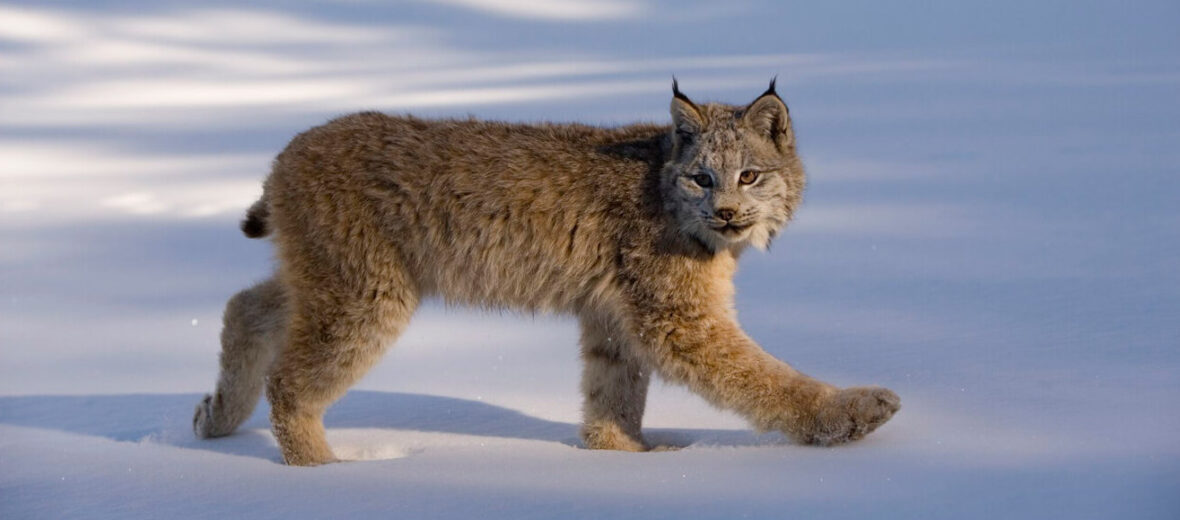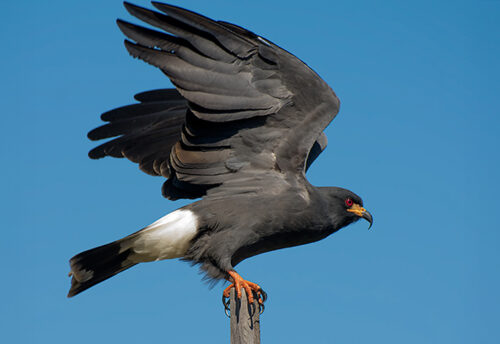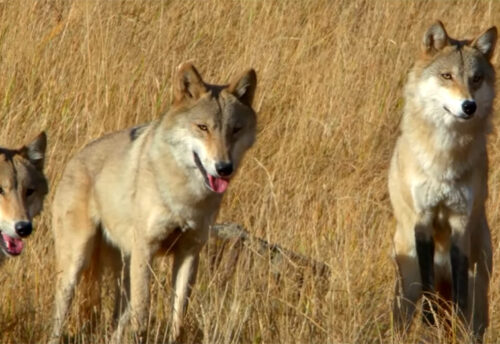
The Canadian lynx lives in forested areas in the United States and Canada & is well adapted to the life in extremely low temperatures. Lynx are found in the broad boreal forest belt. The number of lynx have been greatly reduced due to poaching. Their numbers fluctuate based on the amount of rodents there are available. For instance, the more snowshoe hares, the more lynx, the fewer hares, the lower the numbers of lynx. Canadian lynx are listed as Least Concern by the IUCN.
First the Stats…
Scientific name: Lynx canadensis
Weight: Up to 24 lbs.
Length: Up to 3.5 feet
Height: Up to 22 inches, at the shoulder
Lifespan: Up to 21 years
Now on to the Facts!
1.) The tufts on their ears aid in their keen sense of hearing. They are able to detect even the slightest sound made from a mouse up to 250 feet away!
2.) They prey on arctic hares, snowshoe hares, squirrels, mice, and birds. Sometimes Canadian lynx will even hunt unsuspecting deer.
3.) Not being a fast runner, the lynx chooses instead to ambush their prey from a perch or a nearby shrub or tree.
4.) The primary predators of lynx are wolves, mountain lions, coyotes, and humans.
5.) Canadian lynx can produce purrs, cat-like meows, and hisses.
But wait, there’s more on the the Canadian lynx!
6.) The name lynx comes from the Greek word “to shine,” and might be a reference to the reflective quality of their eyes.
7.) Lynx are nocturnal (active at night).
Did you know…?
Canada lynx look a lot like bobcats, but there are some slight differences: bobcats have shorter legs and smaller feet than lynx, bobs also have shorter tufts on their ears, and the tip of their tail is black on top and white underneath.
8.) Their large, round, furry feet act as snowshoes, preventing them from sinking too deeply into the snow.
9.) Lynx are solitary and only join with another during mating season.
10.) Gestation (pregnancy) lasts 63 – 70 days and produces 1 – 8 kittens.
Now a Short Canadian Lynx Video!
Also, check out the Critter Science YouTube channel. Videos added frequently!
Want to suggest a critter for me to write about? Let me know here.



